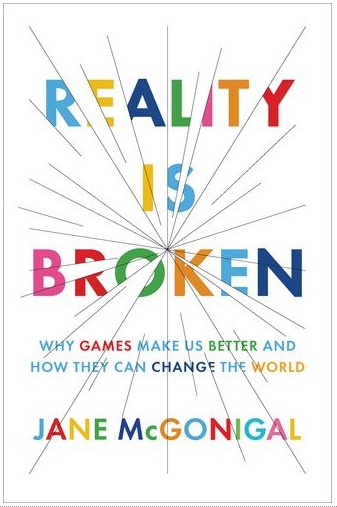 "Reality Is Broken" by Jane McGonigal was my introduction to the concept of Gamification. It definitely changed the way that I look at the world around me. Gamification seeks to reshape and redesign the world around us to more closely resemble a game, as games are one of the most powerful motivators. The book explores videogames such as FoldIt, a puzzle game in which users manipulate proteins and the data generated during gameplay is used in research on curing diseases such as cancer, HIV/AIDS, and Alzheimers, as well as a school in New York City that structures assignments as quests and adventures to keep the students interested and passionate about what they are learning. I find this concept absolutely fascinating because I think it has the potential to make enormous changes in our world, and that gamification as a concept will be embraced by many industries and organizations in the future as a crucial consideration in design.
"Reality Is Broken" by Jane McGonigal was my introduction to the concept of Gamification. It definitely changed the way that I look at the world around me. Gamification seeks to reshape and redesign the world around us to more closely resemble a game, as games are one of the most powerful motivators. The book explores videogames such as FoldIt, a puzzle game in which users manipulate proteins and the data generated during gameplay is used in research on curing diseases such as cancer, HIV/AIDS, and Alzheimers, as well as a school in New York City that structures assignments as quests and adventures to keep the students interested and passionate about what they are learning. I find this concept absolutely fascinating because I think it has the potential to make enormous changes in our world, and that gamification as a concept will be embraced by many industries and organizations in the future as a crucial consideration in design.The title of the book aludes to the current debates over the damage that video games have done to children's minds. Kids who play a lot of video games may have trouble focusing and staying interested in school, but Jane McGonigal makes the argument that it is not what is wrong with the children but what is wrong with the way we are trying to teach them. Children who watch television are used to passively receiving entertainment and information, but when playing video games, children are actively involved- they are making decisions, taking action, and receiving immediate feedback. Children then go to school and are expected to be little more than passive observers. When compared to psychological needs met by video games, reality IS broken.




